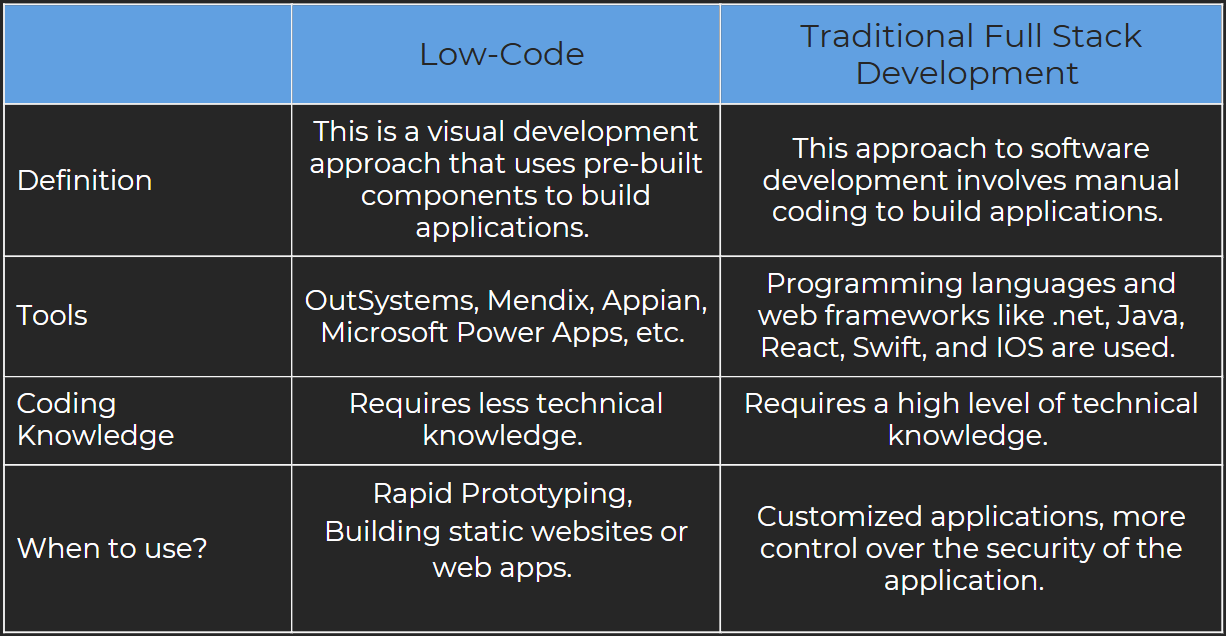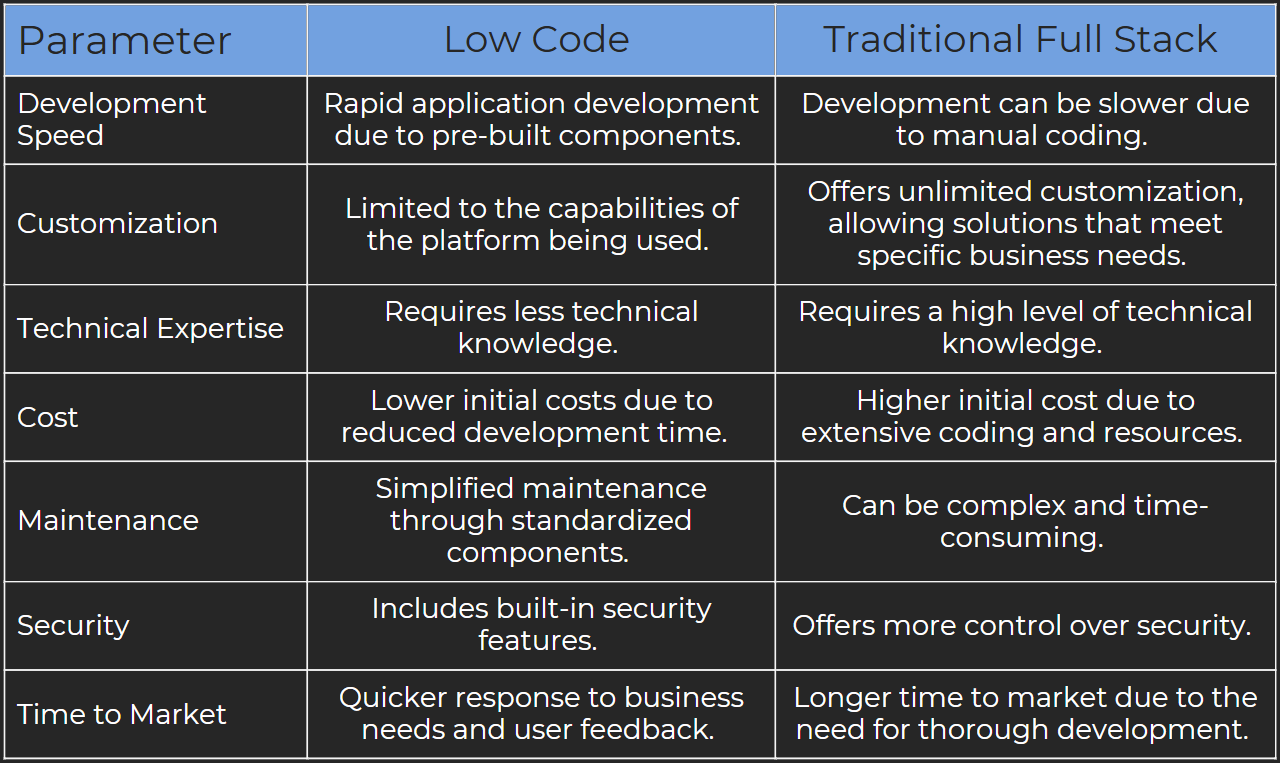In today’s fast-paced market, organizations need adaptable software quickly. Traditional full-stack development requires extensive coding and resources, slowing progress. Low-code platforms however reduce manual coding. This approach boosts agility, allowing technical and non-technical developers to create powerful applications faster, enhancing efficiency, and accelerating development cycles in a constantly changing landscape.
Comparison of both approaches:

Use Cases of Low-Code:
Low code approaches provide various features that streamline quicker and more efficient development of applications, reducing reliance on extensive coding expertise.

Faster Development Cycles:
Low-code tools offer visual interfaces reducing manual coding and speeding up the development cycles.
Enhanced Productivity:
Low-code development does not require much technical expertise, so it delegated non-technical developers to help with app development.
Savings:
By minimizing the manual coding required, the low-code approach saves time, resources, and maintenance costs, making it a better option than traditional development.
Bridging Talent Gap:
Low-code platforms address the shortage of skilled developers, empowering a broader range of users to contribute to application development.
Traditional Development: A Tried-and-True Approach:
Traditional full-stack development uses a comprehensive skill set, driving successful projects across industries over many years.
Advantages of Conventional Development:
- Unlimited Customization: The traditional approach offers unlimited customization, allowing for solutions that meet specific business needs.
- Scalable and Adaptable: Easily accommodates growth and evolving business requirements.
- Expanded Functionality: Allows integration of diverse features and third-party integrations.
Disadvantages of Traditional Development:
- Time-Consuming: Development can take significantly longer due to the need for extensive customization and testing.
- Higher Costs: Needs trained expertise and has long development cycles which increases the costs.
- Complex Maintenance: Requires ongoing and consistent maintenance which can make it a tedious process.
Benefits of Low Code vs Traditional Development
Use low-code for rapid prototyping, static websites, and microservices, and combine with full-stack development for faster, cost-effective testing.

Conclusion
The hybrid development approach combines traditional methods with low-code solutions, accelerating development, democratizing app creation, and enhancing organizational efficiency.
Book a consultation with Genolis to streamline business solutions and succeed!